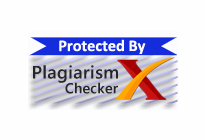ANALISIS INOVASI PRODUK, PEMASARAN DAN KOLABORASI (IP2K) KUNCI KEBERHASILAN UMKM PASCA PANDEMI COVID-19
Abstract
Micro, Small, and Medium Enterprises (MSMEs) are sectors that have been affected by the Covid-19 pandemic. The pandemic in Indonesia has been going on for approximately two years, so it must be addressed with some adaptations to survive it. The impact of the pandemic on MSMEs in Indonesia is relatively high, reaching 87.5% according to the Minister of State-Owned Enterprises (SOEs) statement, which means that only 12.5 feel the impact is relatively small. Digitalization is a solution for SMEs as a business strategy to survive in the new normal era since the pandemic has changed people's behavior and the business competition map. Collaboration with digitalization can be done with Collaborative Marketing. This study aims to find how MSMEs can apply solutions to rise after the Covid-19 pandemic and identify product innovation, marketing, and collaboration (IP2K) factors that play a role in growing MSMEs so that they have a competitive advantage. The results show that only MSMEs that carry out product innovation, implement appropriate marketing strategies, and collaborate can successfully survive and develop their businesses. So that as the key to the success of MSMEs after the pandemic, MSMEs must innovate products, implement appropriate marketing strategies, and collaborate in developing their businesses.
Downloads

This work is licensed under a Creative Commons Attribution 4.0 International License.
The use of the article will be governed by the Creative Commons Attribution license as currently displayed on Creative Commons Attribution 4.0 International License.
Author’s Warranties
The author warrants that the article is original, written by stated author(s), has not been published before, contains no unlawful statements, does not infringe the rights of others, is subject to copyright that is vested exclusively in the author and free of any third party rights, and that any necessary written permissions to quote from other sources have been obtained by the author(s).
User Rights
JSS's spirit is to disseminate articles published are as free as possible. Under the Creative Commons license, JSS permits users to copy, distribute, display, and perform the work. Users will also need to attribute authors and JSS on distributing works in the journal.
Rights of Authors
Authors retain all their rights to the published works, such as (but not limited to) the following rights;
- Copyright and other proprietary rights relating to the article, such as patent rights,
- The right to use the substance of the article in own future works, including lectures and books,
- The right to reproduce the article for own purposes,
- The right to self-archive the article,
- The right to enter into separate, additional contractual arrangements for distribution of the article's published version (e.g., post it to an institutional repository or publish it in a book), with an acknowledgment of its initial publication in this journal (Jurnal STIE SEMARANG).
Co-Authorship
If the article was jointly prepared by other authors, any authors submitting the manuscript warrants that he/she has been authorized by all co-authors to be agreed on this copyright and license notice (agreement) on their behalf, and agrees to inform his/her co-authors of the terms of this policy. JSS will not be held liable for anything that may arise due to the author(s) internal dispute. JSS will only communicate with the corresponding author.
Royalties
This agreement entitles the author to no royalties or other fees. To such extent as legally permissible, the author waives his or her right to collect royalties relative to the article in respect of any use of the article by JSS.
Miscellaneous
JSS will publish the article (or have it published) in the journal if the article’s editorial process is successfully completed. JSS's editors may modify the article to a style of punctuation, spelling, capitalization, referencing and usage that deems appropriate. The author acknowledges that the article may be published so that it will be publicly accessible and such access will be free of charge for the readers as mentioned in point 3.





.png)





